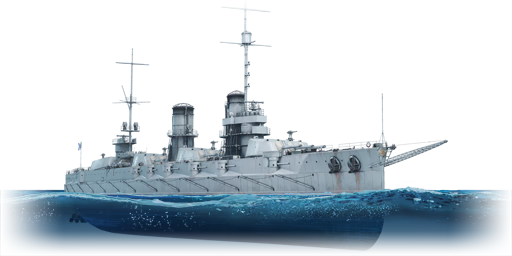The Imperatritsa Mariya was the lead ship of her class of dreadnoughts built for the Imperial Russian Navy. The Imperatritsa Mariya-class was based on the Gangut-class dreadnought with some changes, such as a lower top speed and more armour. The sixteen secondary 120 mm guns found on Gangut-class ships were replaced by twenty 130 mm guns, and the maximum elevation of the guns was increased by 10 degrees compared to the Gangut. Imperatritsa Mariya was laid down on 30th October 1911 and commissioned on 10th June 1915. She served as part of the Black Sea Fleet, where she conducted escort missions for pre-dreadnought battleships bombarding the Ottoman coast. On numerous occasions during October 1915, she engaged the Ottoman light cruiser Midilli, causing nothing other than splinter damage to her. The rest of her short career was uneventful until 20th October 1916, when she sank after a magazine explosion while at anchor at Sevastopol. The crew managed to flood the forward magazines, preventing a catastrophic explosion of all the other magazines. As the ship capsized, 228 crewmen were lost. She was raised in 1918, but her poor condition and the chaos following the Russian Revolution caused her to further deteriorate. The hull was scrapped in 1926. Two of her gun turrets were salvaged and used as a coastal battery during the Siege of Sevastopol in WWII.
The Imperatritsa Mariya was introduced in Update "New Power". As an improved version of the Gangut-class, the Mariya is markedly similar to the Poltava with several improvements. The ship’s armour scheme is significantly improved from the Poltava, most notably the barbettes' armour being increased by 100 mm. Although the Mariya is armed with the same twelve 305 mm guns in four triple turrets as the Poltava, the Maria’s rate of fire is significantly faster at 20 seconds with an Ace crew. This allows her to not only annihilate any unfortunate cruiser or early battleship within her line of sight with a few salvos, but also to contend with more advanced battleships in uptiers. However, much like other Imperial Russian battleship designs, the Maria’s linear turret layout results in her being more vulnerable to fire damage and therefore at risk of magazine explosion.















